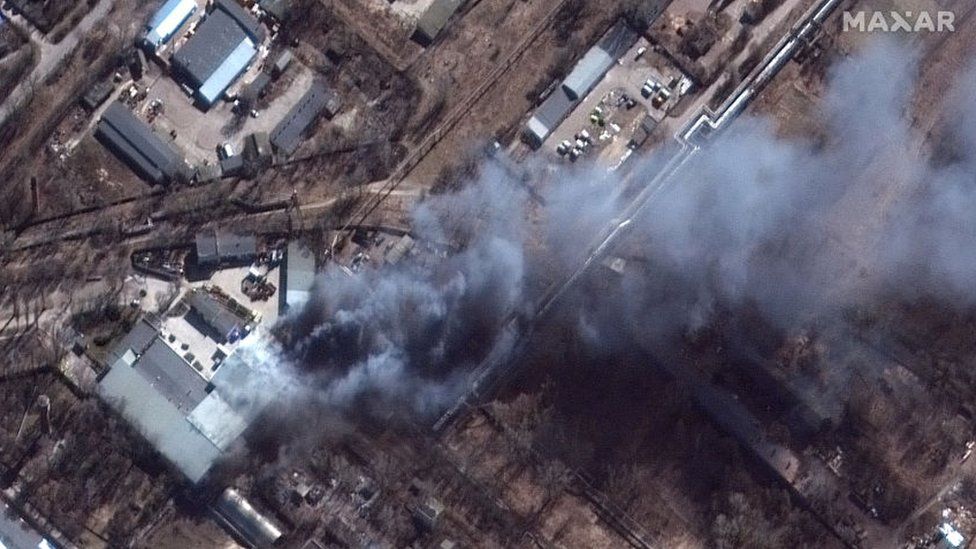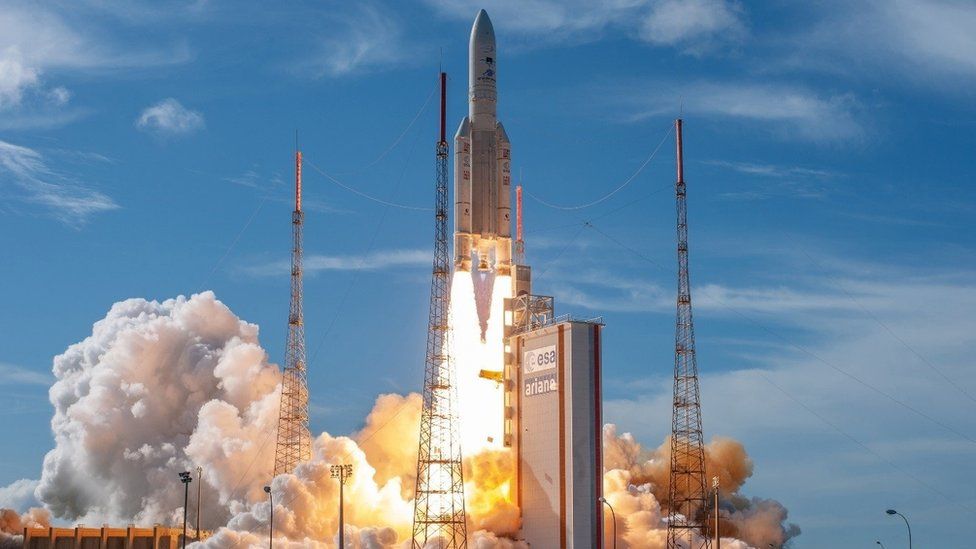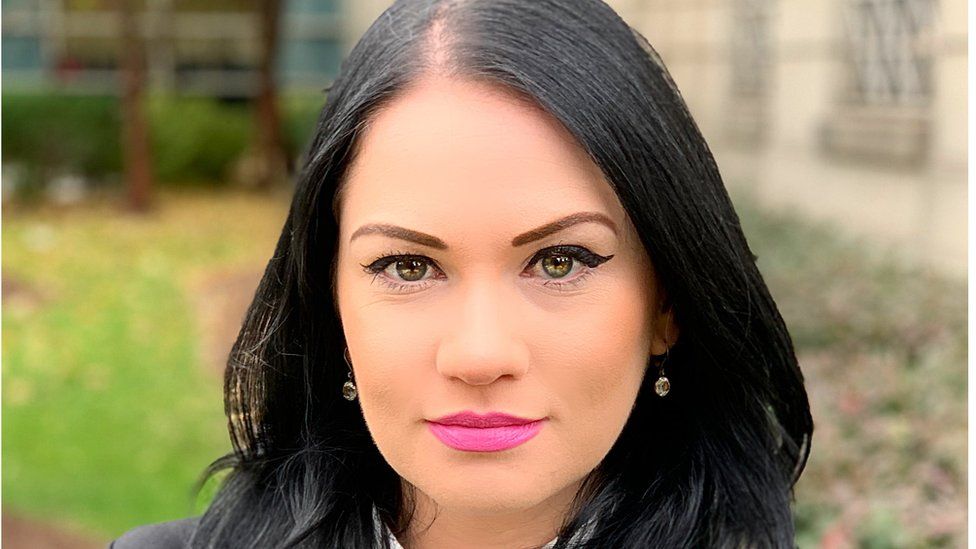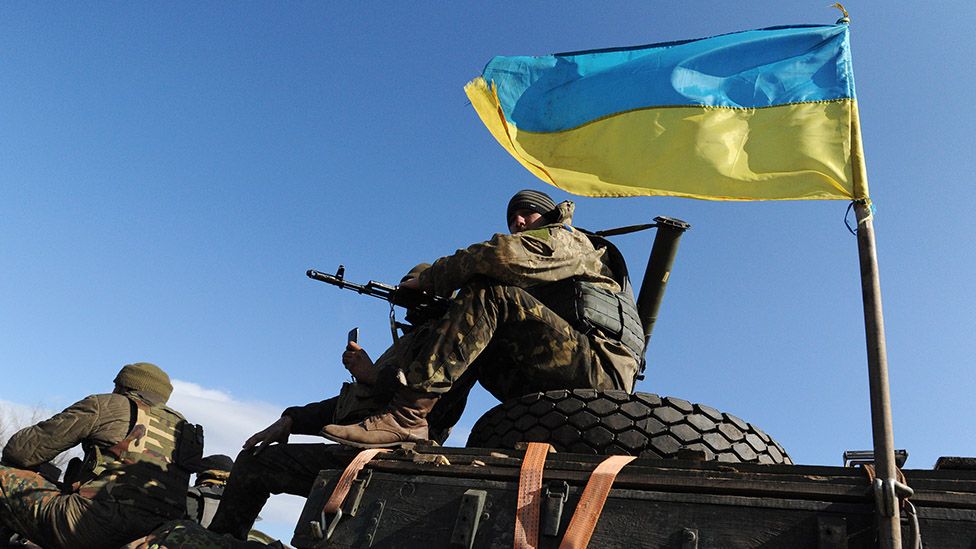Chris Baraniuk is a technology of business reporter.
 Image source, Maxar
Image source, MaxarKyle Glen, a project manager in Wales, has a hobby of tracking Russian troop movements.
Mr Glen is one of the co-founders of Conflict News, which has more than 400,000 followers. It gathers photos and videos of conflict from a variety of online sources.
Since early last year, he and others in the open source intelligence community have been watching Russian military activity.
He bought and shared images from SkyWatch, which showed the massing of vehicles along the Russia-Ukraine border, and the moment when the invasion began.
We watched it go from nothing to quite significant build-up and then it was empty again the day before the invasion, he recalls.
Mr Glen says he doesn't get any money from this.
Content shared via social media has been included in the media coverage of the war in Ukraine. Satellite photos show troop movements and damage to cities.
Satellite pictures taken in recent days appear to show the destruction of Russian helicopters, extensive damage to a shopping centre and residential districts in Mariupol, and a civilian tanker vessel on fire in the Black Sea.
 Image source, Maxar
Image source, MaxarPrivately-owned companies that launch and operate their own satellites have distributed satellite images of the conflict zone.
Members of the public and military analysts alike can use these images to gauge the situation on the ground in Ukraine and the progress of Russia's invading armed forces from thousands of miles away.
The amount of satellite imagery available online during previous conflicts, including the war in Syria, was a drop in the bucket compared to what has come out of Ukraine, according to Mr Glen.
What has changed? Commercial firms have been able to sell their own unclassified imagery, even though government and intelligence agency satellites gather classified, secret information. This material is easy to find online.
Satellite images can be used to track everything from wildfires to crops and the movement of ships. Chris Quilty, partner at Quilty Analytics, says that there has been a big rise in the number of commercial satellites.
As he puts it, there are more eyes in the sky.
 Image source, Arianespace
Image source, ArianespaceMembers of the public can purchase high-quality pictures gathered by satellite for as little as $10 per sq km.
The resolution of these images is sometimes very high, capturing small details that are 30 cm by 30 cm at ground level. It is possible to identify vehicles and road markings.
Satellites can be used to monitor specific locations multiple times a day, picking up even small changes almost as soon as they happen.
The willingness of the public to engage with satellite images has really taken off as the technology has advanced.
Synthetic aperture radar imagery is more difficult to interpret than a picture taken with an optical lens.
Satellites can take pictures through the cloud. The resulting black-and-white pictures might show vehicles, for example, as rows of bright dots.
These types of images have aided Mr Glen and others in tracking the beginning of the Ukraine invasion.
 Image source, Georgetown University
Image source, Georgetown UniversityRita Konaev, associate director of analysis at Georgetown University's Center for Security and Emerging Technology, says satellite imagery has been an aspect of modern conflict for 10 to 15 years now, but the scale is different and the accessibility is different.
The architecture of European cities like Kyiv is very familiar to the Western world, says Dr Konaev. She suggests that this familiarity may have influenced the response in the West to the invasion.
Mr Glen says that followers of Conflict News and similar social media accounts can verify satellite imagery by checking online sources themselves.
He acknowledges that he and others like him in the open source intelligence community make judgements about what to share and when.
He identifies more closely with the Ukrainians than the Russians in this conflict, so he wouldn't publish any information about their military movements to avoid compromising their safety.
Private companies are sharing images captured from the sky with the Ukrainian military. One such example is the Canadian firm.
Dr Konaev believes that satellite images offer a unique overview of events unfolding thousands of miles away, which may explain some of the heightened interest in these pictures.
 Image source, Getty Images
Image source, Getty ImagesShe says that the imagery from a distance gives a better view of the scale of the destruction.
There could be consequences of making such detailed imagery widely available.
Although militaries have vast intelligence resources that they rely on beyond social media, there is no idea how satellite images of troop movements could influence decisions on the ground.
There are real, potential life or death consequences according to Dr Konaev.
Mr Glen will probably never know if the image he shares leads to a fatal attack or confrontation on a frontline.
He says it makes him hesitate, but it is something he is aware of.

